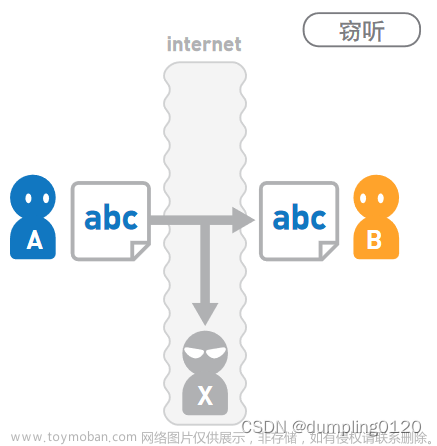欧拉函数


互质就是两个数的最大公因数只有1,体现到代码里面就是a和b互质,则b mod a = 1 mod a (目前我不是很理解,但是可以这样理解:a和b的最大公因数是1,即1作为除数和b作为除数时,对于被除数a来说余数是一样的,即1/a的余数和b/a是一样的,即b mod a = 1 mod a)
欧拉函数的作用是求1-n与n互质的个数
#include <cstdio>
#include <iostream>
#include <algorithm>
#include <string.h>
#include <string>
#include <math.h>
#include <vector>
#include <queue>
#include <map>
#include <unordered_map>
using namespace std;
void get_eura(int x)
{
int res = x;
for (int i = 2; i <= x / i; ++ i)
{
if (x % i == 0)
{
//res = res * (1 - 1/i);或者res = res * (i - 1) / i;都不行,前者是浮点数1 后者会溢出
res = res / i * (i - 1);
while (x % i == 0)
{
x /= i;
}
}
}
if (x > 1) res = res / x * (x - 1);
cout << res << endl;
}
void solve()
{
int n;
cin >> n;
while (n -- )
{
int x;
cin >> x;
get_eura(x);
}
}
int32_t main()
{
ios::sync_with_stdio(0);
cin.tie(0);
int T = 1;
//cin >> T;
while (T --) solve();
return 0;
}
AcWing 874. 筛法求欧拉函数
线性筛 + 欧拉函数(有一点推公式)
#include <cstdio>
#include <iostream>
#include <algorithm>
#include <string.h>
#include <string>
#include <math.h>
#include <vector>
#include <queue>
#include <map>
#include <unordered_map>
using namespace std;
const int N = 1e6 + 10;
int primes[N], st[N], eulers[N];
int cnt;
void get_eulers(int x)
{
eulers[1] = 1;
for (int i = 2; i <= x; ++ i)//只是在线性筛的过程中顺便求了一下每个数的欧拉函数
{
if (!st[i])//1-n的质数
{
primes[cnt++] = i;
eulers[i] = i - 1;
}
for (int j = 0; primes[j] <= x / i; ++ j)//1-n的合数//任何合数都含有质因数,4 = 1 * 2 * 1 * 2;
{
st[primes[j] * i] = 1;
if (i % primes[j] == 0)
{
eulers[i * primes[j]] = eulers[i] * primes[j];
break;//其实也相当于一个else
}
//eulers[i * primes[j]] = eulers[i] * primes[j] / primes[j] * (primes[j] - 1);
eulers[i * primes[j]] = eulers[i] * (primes[j] - 1);
}
}
}
void solve()
{
int n;
cin >> n;
get_eulers(n);
long long res = 0;
for (int i = 1; i <= n; ++ i) res += eulers[i];
cout << res;
}
int32_t main()
{
ios::sync_with_stdio(0);
cin.tie(0);
int T = 1;
//cin >> T;
while (T --) solve();
return 0;
}
快速幂
1 2 4 8成指数倍增长 log的时间复杂度
AcWing 875. 快速幂
long long qmi(int a, int b, int p)
{
long long res = 1;
while (b)
{
if (b & 1)
{
res = res * a % p;
}
a = a * (long long)a % p;
b >>= 1;
}
return res;
}
AcWing 876. 快速幂求逆元

欧拉函数 =>费马定理 =>快速幂实现费马定理计算结果
#include <cstdio>
#include <iostream>
#include <algorithm>
#include <string.h>
#include <string>
#include <math.h>
#include <vector>
#include <queue>
#include <map>
#include <unordered_map>
using namespace std;
long long qmi(int a, int b, int p)
{
long long res = 1;
while (b)
{
if (b & 1) res = res * a % p;
a = (long long)a * a % p;
b >>= 1;
}
return res;
}
void solve()
{
int n;
cin >> n;
while (n --)
{
int a, p;
cin >> a >> p;
if (a % p == 0) cout << "impossible" << endl;
else cout << qmi(a, p - 2, p) << endl;//a需要与m互质,否则a不存在乘法逆元
}
}
int32_t main()
{
ios::sync_with_stdio(0);
cin.tie(0);
int T = 1;
//cin >> T;
while (T --) solve();
return 0;
}
扩展欧几里德(裴蜀定理)
AcWing 877. 扩展欧几里得算法
ll gcd(ll x,ll y)
{
if(y==0) {return x;}
return gcd(y,x%y);
}
这是一个求最大公约数(Greatest Common Divisor,简称GCD)的函数实现。
该函数的参数为两个整数x和y,返回值为它们的最大公约数。在函数中,我们使用递归的方式来求解最大公约数。
具体地,我们先判断y是否为0。如果y等于0,那么x就是最大公约数,直接返回x即可。否则,我们将x对y取模,得到余数r,然后递归调用gcd(y, r)来求解y和r的最大公约数。由于r一定小于y,因此每次递归调用时,y都会不断减小,直到y等于0,此时x就是最大公约数。
例如,当x=12,y=18时,我们可以按照如下步骤来求解它们的最大公约数:
gcd(12, 18)
-> gcd(18, 12)
-> gcd(12, 6)
-> gcd(6, 0)
最终结果为6,即12和18的最大公约数为6。
这个函数的实现基于欧几里得算法,也叫辗转相除法。这个算法的基本思想是,两个整数的最大公约数等于其中较小的数和两数之差的最大公约数。通过不断地将较大的数对较小的数取模,我们可以将两个数的大小逐渐缩小,直到其中一个数为0,此时另一个数就是最大公约数。这个算法的时间复杂度为O(logn),其中n为两个整数的较大值
理解递归的本质:
裴蜀定理和线性同余方程的证明: 文章来源:https://www.toymoban.com/news/detail-703785.html
文章来源:https://www.toymoban.com/news/detail-703785.html
#include <cstdio>
#include <iostream>
using namespace std;
int exgcd(int a, int b, int &x, int &y)
{
if (b == 0)
{
x = 1, y = 0;
return a;
}
//d就是最大公约数,本题其实用不到
int d = exgcd(b, a % b, y, x);//本题的精髓
/*
只是为了方便更改x和y的值,如果用
d = exgcd(b, a % b, x, y);
最后就解得 新x = y 新y = x - a / b * y
那么代码就得这么写
int t = y;
y = x - a / b * y;
x = t;
显然比只要写一句 新y -= a / b * x; 麻烦
*/
y -= a / b * x;
return d;
}
void solve()
{
int n;
cin >> n;
while (n -- )
{
int a, b, x, y;
cin >> a >> b;
exgcd(a, b, x, y);
cout << x << " " << y << endl;
}
}
int32_t main()
{
ios::sync_with_stdio(0);
cin.tie(0);
int T = 1;
//cin >> T;
while (T --) solve();
return 0;
}
AcWing 878. 线性同余方程
线性同余方程用扩展欧几里德定理求解
本题推导过程在上面
为什么要% m 文章来源地址https://www.toymoban.com/news/detail-703785.html
文章来源地址https://www.toymoban.com/news/detail-703785.html
#include <cstdio>
#include <iostream>
using namespace std;
int exgcd(int a, int b, int &x, int &y)
{
if (b == 0)
{
x = 1, y = 0;
return a;
}
else//其实不用else,上面满足直接return了,上面不满足也会走到下面
{
int d = exgcd(b, a % b, y, x);
y -= a / b * x;
return d;
}
}
void solve()
{
int n;
cin >> n;
while (n -- )
{
int a, b, m, x, y;
cin >> a >> b >> m;
int d = exgcd(a, -m, x, y);
if (b % d != 0) cout << "impossible" << endl;
else cout << (long long)b / d * x % m << endl;
}
}
int32_t main()
{
ios::sync_with_stdio(0);
cin.tie(0);
int T = 1;
//cin >> T;
while (T --) solve();
return 0;
}
中国剩余定理
到了这里,关于算法基础-数学知识-欧拉函数、快速幂、扩展欧几里德、中国剩余定理的文章就介绍完了。如果您还想了解更多内容,请在右上角搜索TOY模板网以前的文章或继续浏览下面的相关文章,希望大家以后多多支持TOY模板网!












